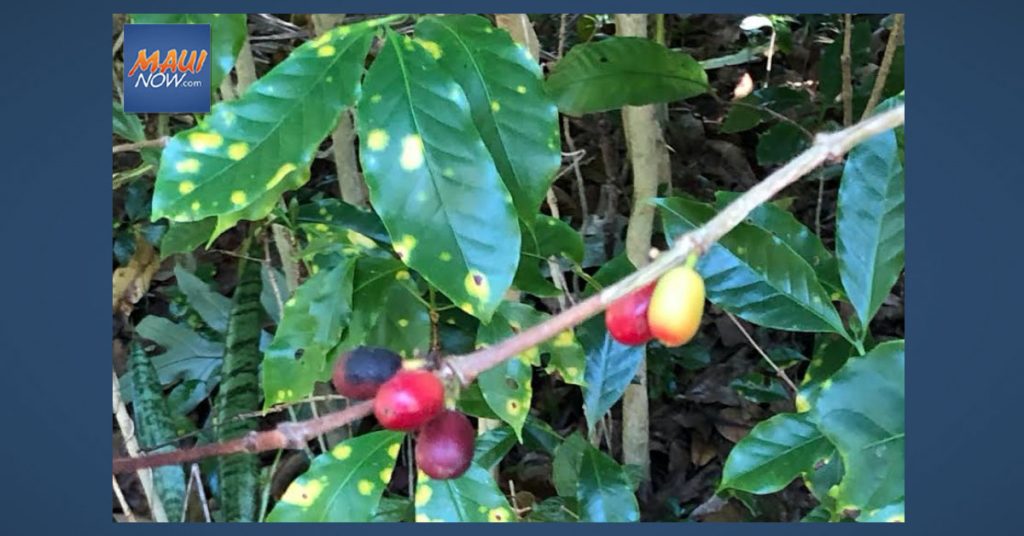Webinars Scheduled for Coffee Growers on Possible Fungicide Use

The University of Hawaiʻi – College of Tropical Agriculture and Human Resources and Hawai`i Department of Agriculture are hosting two free webinars to inform Hawaiʻi coffee growers on the potential use of a fungicide to combat coffee leaf rust. The webinars are scheduled for 4:30 p.m. to 5:30 p.m. on Thursday, April 1 and Thursday, April 8.
Earlier this month, the HDOA filed a request for emergency exemption with the US Environmental Protection Agency to allow the use of a fungicide, Priaxor® Xemium, on coffee plants in Hawaiʻi. The fungicide is approved for use on other agricultural crops but EPA approval is needed to allow its use specifically on coffee plants.
In anticipation that EPA may approve the request by the end of April, the UH-CTAHR and HDOA will be hosting two Zoom webinars to help educate coffee growers on the safe use of the fungicide.
The webinars have been scheduled for:
- Thursday, April 1 and Thursday, April 8 from 4:30 p.m. to 5:30 p.m.
- Registration is required and may be completed online.
- Webinars are free.
- For more information on the Zoom webinars, contact UH-CTAHR Associate Extension Agent Andrea Kawabata at [email protected] or call (808) 322-0164
Hawaiʻi researchers believe that if approved by EPA and used properly, Priaxor has the ability to inhibit the CLR spore germination and growth on the coffee plant leaves, unlike currently approved contact fungicides that kill CLR spores on the outside of the leaf.
CLR has been detected on Maui, Hawaiʻi Island, Lānaʻi and Oʻahu and is a serious threat to the state’s $56 million coffee industry.
CLR is a devastating coffee pathogen and was first discovered in Sri Lanka in 1869 and can cause severe defoliation of coffee plants resulting in greatly reduced photosynthetic capacity. Depending on CLR prevalence in a given year, both vegetative and berry growth are greatly reduced. There are multiple long-term impacts of CLR, including dieback, resulting in an impact to the following year’s crop, with estimated losses ranging from 30 percent to 80 percent.









